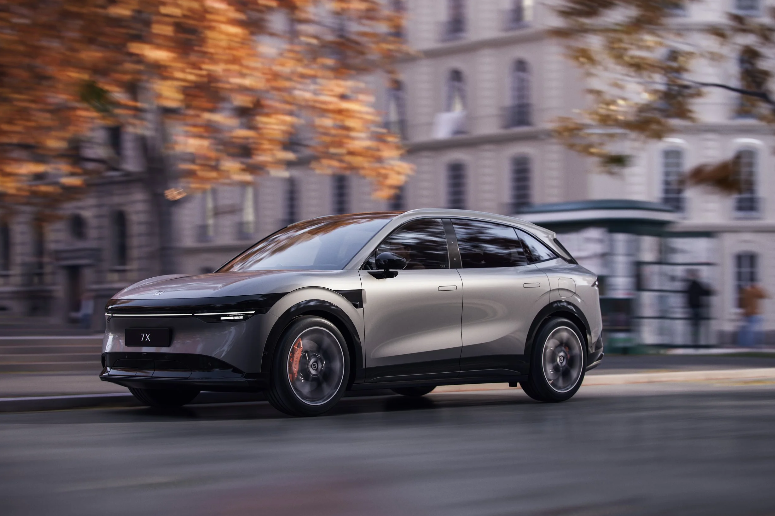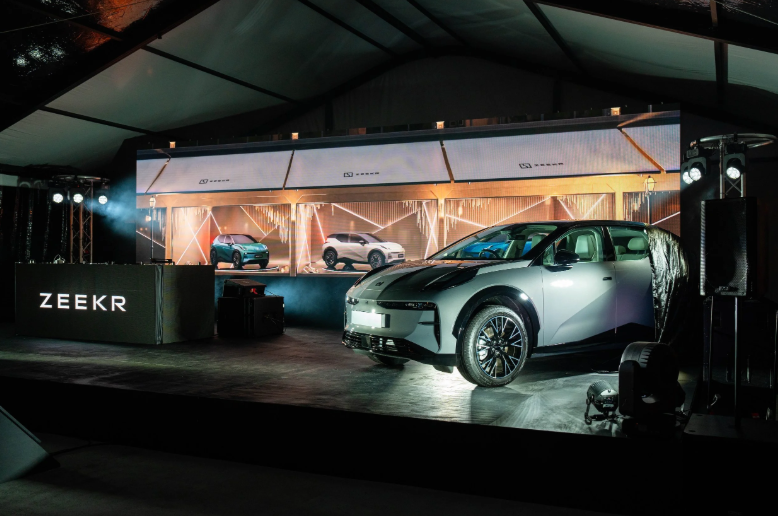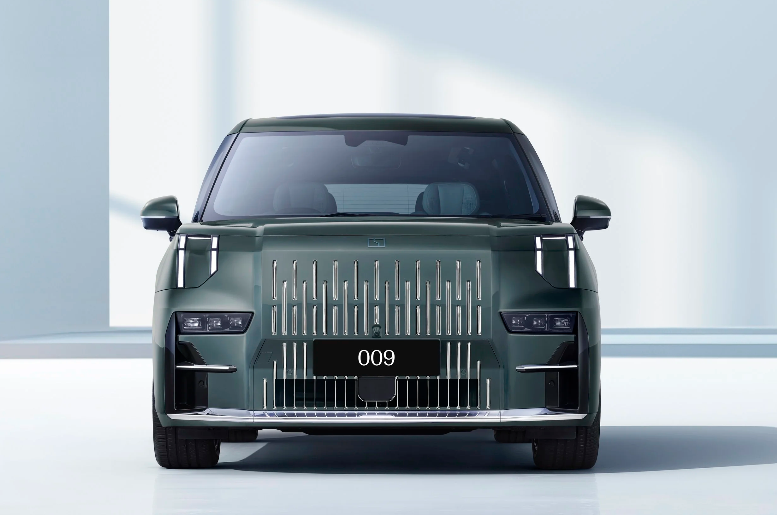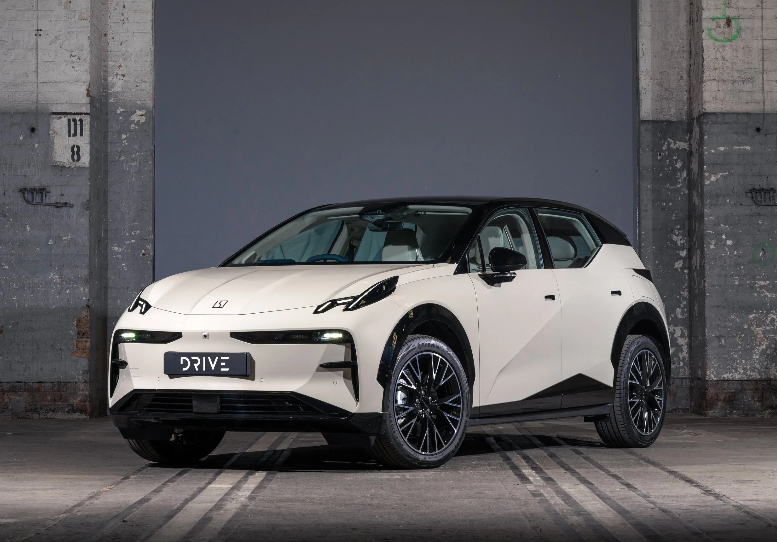LATEST NEWS
Let Zeekr seeking begin - three models incoming
Richard Bosselman
August 22, 2025
Bullish premium Chinese make is out to own the $60-$100,000 price zone. But it’s also looking to exploit a larger opportunity as well.
PRIMARY focus will be on what’s been defined as a highly exploitable ‘white space’ within the $60-$100k zone, but just-announced Chinese premium electric brand Zeekr is also out to go much bigger.
Top choice - in respect to price, substance and specification - is a machine that is stacked with 20 advanced driving assists and was enthusiastically promoted at an event yesterday as being “a mobile lounge performance machine and technological showcase.”
Are you - is anyone - ready for the 009?
Announcement Zeekr is coming here from early September was a highlight of yesterday’s announcement of NordEast, the new network with the auspices of New Zealand’s largest independent new-vehicle importer, Giltrap Group.
The new operation will unite a sextet of Geely Group brands under one distribution company for the first time, anywhere in the world.
Zeekr being part of this was only signed off at the beginning of this week, but at least it’s product range was already easily sorted, as we will achieve vehicles it already provisions to Australia.
Job one for Geely’s premium EV marque is to become a major disruptor in export markets. No small task for a brand that only came into existence four years ago.
However, just within that time, Zeekr has become a fundamental make for Geely Group, another of China’s most successful car making enterprises, now seen as a direct rival for the largest of the lot, BYD.
The aim here is to work toward a goal no other EV provider here has yet to achieve - price parity with comparable internal combustion vehicles.
Dane Fisher (above), NordEast group general manager, says this is the key to "get electrification going.”
Curtailment of EV subsidies at end of 2023 and the introduction of Road User Chargers on battery-involved cars (except mild hybrids) last April, plus general malaise in new car purchasing, hasn’t made that easy, he agrees.
Getting the sector back to how it was in 2020-2023, when EVs were hot sellers and some were subject to waiting lists, will require effort and time. But Zeekr starting with a sub-$60,000 product shows what can be done.
“We had some pauses in the last couple of years after the subsidy came off, but it (the sector) is growing again and that's because obviously the product's excellent,” the industry veteran observed.
With Zeekr “now you've got a premium electric brand with a five in it … which I think is a game changer from where we were a couple of years ago.”
Geely Group has a chance to change buyer mindsets because of its size and scale.
“Almost two million cars sold in the first half of the year and the fastest growing (Chinese brand). So they've got economies of scale that can grow, that can bring even premium vehicles in at an affordable price.”
Some of Zeekr’s passenger cars relate to the NZ-established Volvo C40 and XC40 Recharge, Polestar 2 and Lotus Electre cars that are built in China but claim European input.
So can Zeekr. Though all products are built in China, they are by intent international.
It has built a European team some 1500 people strong with many of the engineers and designers having worked on Geely’s other brands. Also, development and design of Zeekr product was undertaken at Volvo’s base in Gothenburg in Sweden.
Also, in addition to the co-sharing of platforms with Volvo and Polestar models, it also utilises Smart car architecture, thanks to a tie-up between Geely and Mercedes-Benz.
Of three cars incoming, two are there to upset the incumbent prestige-flavoured players in the battery-wed - which to Zeekr means anything electrified (so, not just full EVs but also PHEVs and hybrids) - sub-six figure category.
Tesla Model Y and Model 3 have been immediately named, but conceivably also BYD, GWM/Haval, Lexus, Cupra, Skoda, Nissan, Mazda and others are set to feel heat.
The primary push will be from the X SUV (above), built on a shared platform with the Volvo EX30 and similar in size, coming in $59,900 front and $69,900 four-wheel-drive forms.
The one that’s truly out for a fight is the 7X (top of the page, below), a svelte SUV whose price has yet to be set.
This is Zeekr’s latest hero car, a high-performance medium-SUV outfitting in rear- and all-wheel-drive, with up to 475kW and 0-100kmh in 3.8 seconds. Battery sizes are 75kWh and 100kW, with range up to 615km.
It is the first Zeekr that will use 800-volt architecture, which will allow for faster charging speeds and the ability to replenish from 10 percent to 80 percent in as little as 13 minutes, according to the brand's claims.
Zeekr’s arsenal might also one day include the 9X, a massive off-road luxury wagon.
But for now the flagship is the 009 (below); a car that will sell for $149,900 in seven chair and $154,900 as a six-seater.
This one takes Zeekr into a territory that has yet to be fully conquered locally.
China’s domestic market has a love for large luxury people carriers …. it’s become a home turf niche exploited by electric vehicle makers. However, the world beyond has been less keen.
Kiwis have been offered just one just like the 009 before, the 5.2-metre long seven-seater LDV Mifa9.
It was solidly plush but, when tested, came across as “a solid concept deeply wounded by an imprecise approach to design, engineering and presentation.” It has since been discontinued here.
Zeekr has revived the concept … in even grander scale and at a much higher price: 009 is an even more luxurious model than Mifa9, in six or seven-seat versions, offering up to 450kW and maximum 582km range from a 116kWh battery.
Those variants are also set to sell for $149,900 and $154,900.
To remind, the Mifa9 was $99,990, though residual stock was discounted for much less.
Fisher has expressed confidence the model has a chance to succeed. But it’s still a case of wait and see.
However, the former boss of Audi New Zealand who had overseas’ experience with Lamborghini and Nissan’s thwarted Infiniti luxury ambition, before returning home to set up Giltraps’ Sixt operation and now NordEast, is confident about Zeekr.
“I think Zeekr is a very, very attractive special brand that's going to really disrupt the market in New Zealand.”
Zeekr and Geely-badged product cumulatively give NordEast opportunity to become a bold challenger business.
The aim? “To push the boundaries of bringing affordable electrification to New Zealand and Zeekr is in a premium space. I think it's becoming relatively affordable and I think that's really exciting for consumers in New Zealand.”
“There's some white space in the premium market between 60 and a hundred thousand dollars for electrification and we think Zeke is going to go firmly into that.
“We want to disrupt and this brand can really do some special stuff I think in that space.”
The only conceivable rival 009 has for now is surely the Kia EV9 that has achieved more than 200 registrations, but not easily. Barely established when the EV sector turned sour at end of 2023, like all EVs last year it had to be heavily discounted to move stock. Hyundai’s equivalent, the Ioniq 9, is promised for NZ but has yet to show.
The 009’s six seat layout is two-plus-two-plus two whereas the seven chair car goes two-two-three.
Standard features include Nappa leather and Ultrasuede trim, with heating, ventilation, and massage functions for the first and second-row seats.
Cargo capacity varies from 574 litres up to 2979 litres when the rear seats are folded flat. There’s also a 29-litre front compartment for smaller items.
Luxury involvements include a 15.05-inch OLED main screen, while rear occupants are treated to a 17-inch 3K OLED entertainment display. The driver’s display is a 10.25-inch Full HD instrument cluster, complemented by a 35.95-inch augmented reality (AR) head-up display.
The audio system boasts 30 Yamaha speakers delivering 3000 watts of output. Connectivity options include wireless Apple CarPlay, Android Auto, and a 5G/WiFi hotspot. It supports over-the-air software updates.
The 7X range starts with the RWD model, which has enough power for a claimed 0-100kmh sprint time of six seconds.
This model gets height-adjustable air suspension, heated front seats, 19-inch alloy wheels, a panoramic sunroof (with electric sunshade), and interior ambient lighting as standard equipment.
The 7X RWD uses a 75kWh lithium-iron phosphate (LFP) battery, which uses Zeekr's second-generation 'Golden Brick' technology. This gives a claimed driving range of 480km on the WLTP testing cycle.
Also conceivably in line is the 7X RWD long-range, which adopts a larger 100kWh nickel cobalt manganese (NCM) battery, which Zeekr calls 'Qilin' and gives a claimed driving range of 615km.
The range topper is the Performance AWD, which has the same 100kWh Qilin battery as the rear-wheel-drive model, but twin electric motors slash the claimed 0-100kmh time to 3.8 seconds.
The Zeekr X derivatives, meantime, have a 66kWh lithium-ion (NCM) battery pack, but differ in power outputs and range.
The rear-drive version offers 200kW of power and 343Nm of torque from its single rear-mounted electric motor, claiming a 0-100kmh time of 5.6 seconds. The dual-motor setup increases outputs to 315kW and 543Nm, and drops the 0-100kmh sprint time to 3.8s.
Zeekr has claimed a driving range of 540km for the RWD model and 470km for the AWD, but that’s based on the NEDC formula that, while still applicable in Australia, is outdated here. NZ has stepped up the WLTP testing standard, which lists the RWD model at 446km and the AWD at 425km.
Both variants use a 400V electrical system and support DC fast charging, achieving a 10-80 percent charge in around 30 minutes with 150kW DC power.
Home charging of course takes longer, with the RWD needing up to 11.5 hours on a 7kW home charger, while the AWD can recharge fully in 7.5 hours using a three-phase 11kW setup.
Though Zeekr X can provision in a more lifestyle-oriented four-seat option some places, here it’s just the five-seater layout. Cargo capacity is 362 litres with the rear seats up, expanding to 1182 litres when folded.
Standard features for the Zeekr X RWD include a panoramic glass roof, a six-way powered driver’s seat, dual-zone climate control, rear air vents in the B pillars, rain-sensing wipers, a frameless auto-dimming rear-view mirror, plus heated, power-folding exterior mirrors.
Infotainment is through a 14.6-inch central touchscreen and an 8.8-inch driver display. Wireless Apple CarPlay and Android Auto are standard, along with over-the-air updates through 5G and WiFi hotspot connectivity.
The AWD variant enhances to a 24.3-inch augmented reality head-up display, a Yamaha 13-speaker audio system, heated and ventilated front seats, a heated steering wheel, and an ‘Intelligent B Pillar Display’ that enables entry via facial recognition or a PIN code.
Adaptive cruise control, blind-spot monitoring, forward collision warning, lane departure warning, and lane-keeping assist are standard. Likewise traffic sign recognition, tyre pressure monitoring, 360-degree visual park assist, low-speed pedestrian warning sound and rear collision warning. IT has seven airbags, one being a front centre device, plus ISOFIX anchors and top tether points for child seats.
Wheel options include 19-inch alloys with 235/50 R19 tyres for the RWD, and 20-inch alloys with 245/45 R20 tyres for the AWD.
Both models come with vehicle-to-load (V2L) capability, providing power outlets for external devices inside and outside the vehicle.
Meantime, NordEast will have 14 locations in Auckland, Hamilton, Tauranga, Wellington and Christchurch, with 29 showrooms nationwide.
That will include five Zeekr showrooms.
It is pairing brands, so the three makes Giltrap has held for years, which it defines as ’legacy’ brands - Volvo, Polestar and Lotus - will operate separately from new brands Geely, Zeekr and Farizon.
Says Fisher: “I don’t expect everybody to understand what each brand stands for straight away, but each will have its own personality. And they will be consistent (across the country).”
The new retail operations enable on September 15.









